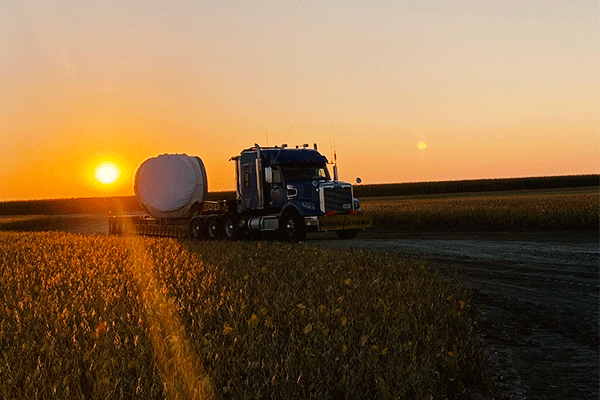
Sometimes, it can feel like things are only getting more expensive. Especially when every freight rate you’re given seems steeper than the next. Just like other logistics professionals, using your shipping dollars correctly is what you do. It’s why you’re good at your job.
So why is it so difficult to exercise your budget further? Is it really because of your location? Could it be that simple?
Here at ATS, we’ve been working with shippers like you, in all corners of the United States, for over 65 years. During this time we’ve hauled, coordinated and priced a lot of freight. Although there’s a catalog of factors that impact the price of any given shipment, sometimes a company’s origin location increases the rate they pay more substantially than others.
Just because this is the case, doesn’t mean you can’t understand why your location impacts your rates. Understanding the intricacies of this industry — intricacies that impact your ability to do your job — will only help you avoid price hikes in the future.
In today’s article, we’ll talk a bit about how a shipment’s origin — your company’s location — impacts the final price of getting it moved. Additionally, we’ll leave you with some tools to help you avoid overpaying going forward.
Below, you’ll find answers to the following questions:
- Why does your freight’s origin impact shipping price?
- What makes an origin location expensive?
- What are some of the most expensive types of origins?
- How can you make the most of your budget in the future?
Why Does Your Freight’s Origin Impact Shipping Price?
Look, there are a ton of factors influencing the price you pay to get freight moved. Prime among them, leading the charge, however, is the interplay between supply and demand.
In the transportation industry, we define supply and demand as follows:
Supply: The total number of trucks, trailers and drivers that are ready, willing and capable of carrying your load.
Demand: The total amount of loads in your area that also need a transportation solution.
Just like other aspects of our free-market economy, as the supply of available carriers in your region decreases while the demand for their services holds steady, the cost of securing an available truck (supply) will increase.
Heightened competition for trailer space will be hard on your pocketbook. But, alas, the cost of the service is the cost of the service.
On the flip side, should demand taper off — leaving truckers (who only make money while hauling a load) scrambling to locate work — you’ll find the bargaining power in your hands — decreasing the price you pay.
As you may suspect, this balance between supply and demand fluctuates greatly from one area of our country to the next.
You see, truckers are subject to a strict set of regulations — known as their hours of service (HOS) — dictating the total amount of time they can spend behind the wheel each day.
As it currently sits, these essential workers are allowed to be “actively on-duty” for 14 hours within a 24-hour period of time. Out of these 14 hours of service, only 11 can be dedicated to driving, leaving the remaining three hours for break periods.
Since truck drivers only make money while their wheels are turning under a load, they like to be in areas with heightened demand for their services. These locations make it easiest for trucking companies and their drivers to make the most of their on-duty hours.
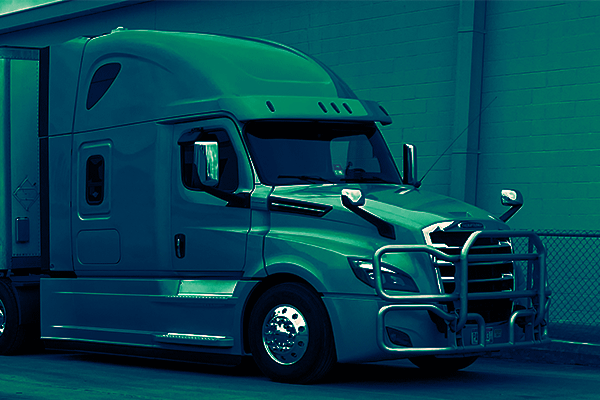
What Makes an Origin Expensive For Freight Shipping?
Although it may fluctuate seasonally, if you’re located in an area without a heavy supply of truckers — which typically matches demand — your location will impact the price you pay.
To get a trucker into your area, your transportation provider will need to do one of two things:
- Locate a driver (in their network or fleet) that’s scheduled to haul an inbound load to your origin.
- Pay a driver to deadhead (drive without a load behind them) to your facility.
The first of these scenarios is certainly doable. Assuming your location has inbound freight demands, your transportation provider — whether it’s an asset company or brokerage — should be able to find a trucker scheduled to get to your location.
And, since you’ll pay this driver to leave a location without a high amount of demand, depending on the needs of your destination, you may see a relaxed rate.
In the second scenario, though, finding a trucker for your load — especially for more remote locations — can be costly. Deadhead miles can add up and, in many cases, if you’re the business that needs a trucker to drive without a load under them, you’ll need to compensate them for their time.
Either way, you should expect to pay more if there isn’t a large number of available trucks in your origin.
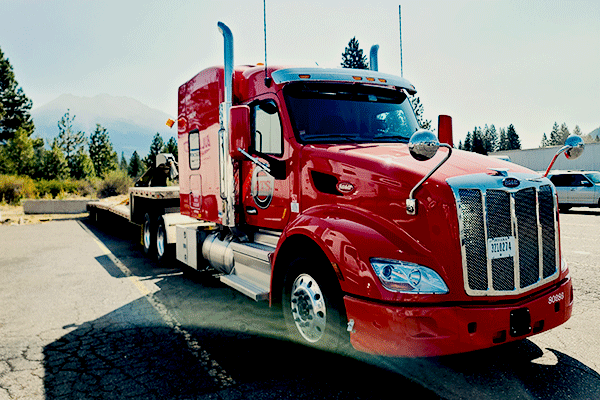
What Are Some of The Most Expensive Origin Types?
There are several reasons the supply of trucks and trailers in your origin may be lower than others. Without a solid pool of trailer-type options around your facility, it’s difficult for shippers like you to get the most from their budget.
Let’s talk about some of the most expensive origin types, and pay attention, some of them might sound familiar.
1. Origins With Low Outbound Freight Demands
Some cities in the U.S. simply don’t consistently need transportation services. Destinations like Las Vegas and Miami keep their economies afloat on the back of tourism dollars.
Unlike manufacturing hubs like Detroit and Chicago, these locations don’t have enough outbound freight to draw truckers to them. This can make finding a competitively-priced transportation solution fairly difficult for the shippers that need one — especially last minute.
2. Origins With Overly High Outbound Freight Demands
This second origin type is the polar opposite of the last. Instead of low outbound demands deterring truckers from entering your origin, sometimes too much competition trailer space can be harmful as well.
Locations with an overly high amount of outbound freight drive up the cost of securing a truck substantially. As your transportation dollars battle against those of other shippers in your origin, expect to pay a bit more for a solution.
In these areas, the price control lies in the hands of area truckers who don’t have trouble filling their trailer space or lining their pocketbooks.
3. Origins Located in Remote Areas
If a trucking company, or driver, knows that it will be difficult to find a paying load going into your origin, they’ll price your shipment accordingly. You see, when a transportation company isn’t motivated to head toward your facility, there’s only one real way to “grease” their wheels; offer them more money.
Companies looking for truck capacity in remote areas like Spearfish, South Dakota, Greenport, New York or Herman, Missouri will need to pay more due to a limited supply of nearby options.
Deadheading a truck to your area can get costly and, if you’re situated in a hard-to-reach location, expect price hikes to occur.
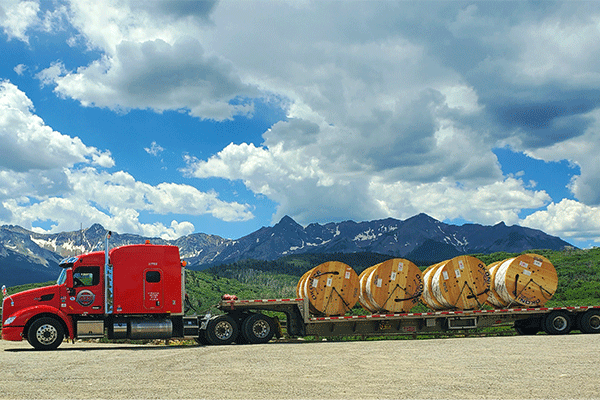
4. Overly Congested Areas
Here at ATS, we see price hikes associated with shippers headed in to, and out of, congested areas like the Island of New York City, Dallas, Atlanta and other port cities all the time.
Contrary to the previous two origin types, these shipments get expensive due to pure population density and the time-consuming nature of these lanes.
Multiple toll booths, bumper-to-bumper traffic and a large amount of outbound freight make it difficult for truckers to maximize their hours of service. Those 14 hours of on-duty time don’t stop after a trucker has started their truck for the day.
As such, asking them to sit in heavy traffic for a long time en-route to your facility or wait for a prolonged period following arrival, is tough on their clock and usually ends up costing additional money.
How Can You Avoid Overpaying For Your Freight?
Sure, your business might not be located in the most convenient place for your shipping budget but that doesn’t mean you’re without hope. Just like anyone else in your position, you deserve the opportunity to take your dollars further. And, as you already know, this industry’s pricing structure is far from cut and dry.
Over the years here at ATS, we’ve noticed that four things — more than any others — help shippers in your predicament cut dollars off your freight rates.
The four largest ways to secure a competitively-priced transportation solution for your freight, no matter your origin, are:
- Prioritize flexibility in your appointment requirements
- Add flexibility to your trailer type requirements
- Give your provider enough lead time
- Offer some common truck driver amenities
Let’s talk a bit about each of them.
1. Prioritize Flexibility in Your Appointment Requirements
As a shipper that finds it difficult to find a cost-effective truck — due primarily to your location — allowing flexibility in both appointment timeframes and trailer type requirements will help you substantially.
It’s far easier for transportation companies to find and schedule an available truck for freight without rigid appointment times. This is especially true when a shipment’s origin makes it more difficult to locate area trucks.
As soon as you lock yourself into an 8 a.m. pick-up appointment — for example — the pool of truckers that are willing and capable of meeting these needs shrinks. In turn, these tight appointments will see the final rate you pay rise.
Instead of holding to these stagnant appointments — especially for early morning picks — consider expanding the pick-up windows you allow. This will help your provider work your freight onto the schedule of nearby truckers. And, the more convenient your load is for them, the less you’re likely to pay.
So, if you’re looking to take your transportation budget further going forward, adding some flexibility to your pick-up windows will help you do just that.
Instead of that strict 8 a.m. pick-up appointment, open your timeframe to any time between 8 a.m. and 12 p.m.
2. Add Flexibility To Your Trailer Type Requirements
The transportation industry is full of unique trailer types each designed to meet a separate set of freight demands.
Step-deck trailers, for example, help shippers move freight that’s a bit too tall to legally haul on a flatbed.
Expandable RGNs and lowboys make hauling large self-propelling machinery convenient. And, one would be remiss to forget about dry van trailers, designed to haul anything from food and beverage items to household goods.
Even though each of these trailers serve to address a specific set of needs, that doesn’t mean they aren’t interchangeable. In fact, many shippers in tough origin locations find opening themselves up to a wider pool of options helps save them money.
Working with a competent transportation provider will help you do the same thing.
In many cases, a step-deck will do just as well as a flatbed for open-deck freight while a reefer trailer with its temperature control unit turned off can move dry van goods.
Whatever it may be, allowing a bit of flexibility in your equipment type requirements while sourcing for capacity will trim some much-needed fat off of your freight bills.
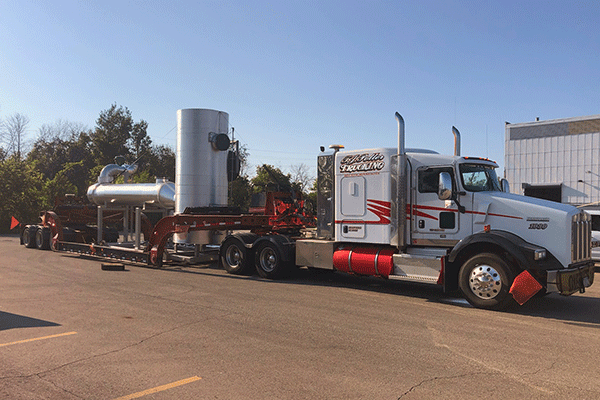
3. Give Your Provider Enough Lead Time
Adding a bit of flexibility to your trailer type and appoinment time requirements will save you money going forward. Doing those two things alone, however, will only take you half way.
In the transportation industry, there are two real bargaining chips on the table; time and money. And, as the amount of notice you give your provider — prior to the moment your freight needs to load — decreases, expect your price to rise.
As a shipper in a remote location, giving your transportation company enough time to find a good solution for your freight couldn’t be more important. Though it varies depending on your commodity and requirements, a lead time of 48-72 hours should be enough to cut some money off of your freight rates.
4. Offer Common Truck Driver Amenities
The final thing that helps businesses in hard-to-service areas find a willing trucker at an affordable price is making their lives a bit richer with each interaction.
Driving truck is a demanding trade. Life on the road can be tough and getting a trucker to come to your location — especially with deadhead involved — isn’t always easy.
As such, the more comfortable you can make your business feel to truckers, the more likely they are to service your freight — and do so repeatedly.
Offering amenities such as on-site parking, cafeteria areas, truck driver accessible bathrooms and easy-to-follow instructions will earn your spot atop each trucker’s destination list. Sure, based on the size of your business it might not be possible to let truckers park overnight. But if it is, and you communicate this on the front end expect to pay a bit less.
Related Article: Reduce Your Freight Costs By Doing These 8 Things Truckers Enjoy
How Does Your Destination Impact Your Freight Shipping Price?
Now that you understand how your origin impacts the price of getting your freight moved, and have some tactics to help you avoid price hikes in the future, you’re one step closer to mastering your budget.
That said, this industry is intricate. There’s still so much more that influences the final shipping price you pay. The next factor you’ll want to understand is how your destination, the other side of the coin, influences your rates.
To help you do this, check out our blog on The Top 5 Most Expensive Freight Shipping Destination Types for a bit more information on how to save money should your freight need to go to any of these locations.
Finally, if you have any questions about how ATS can help you make the most of your shipping dollars in the future, reach out. We’re always happy to assist you in any way you need.




